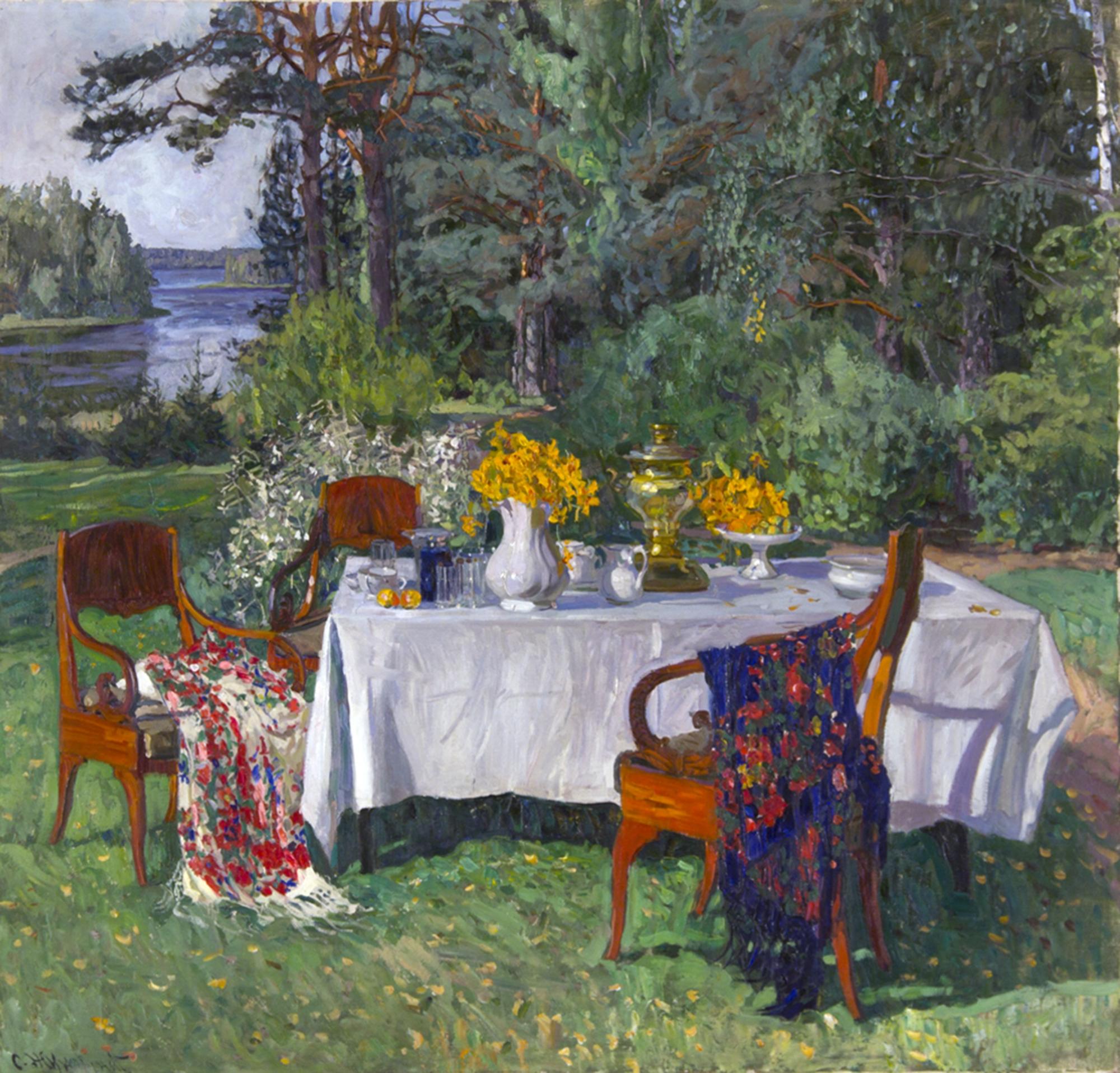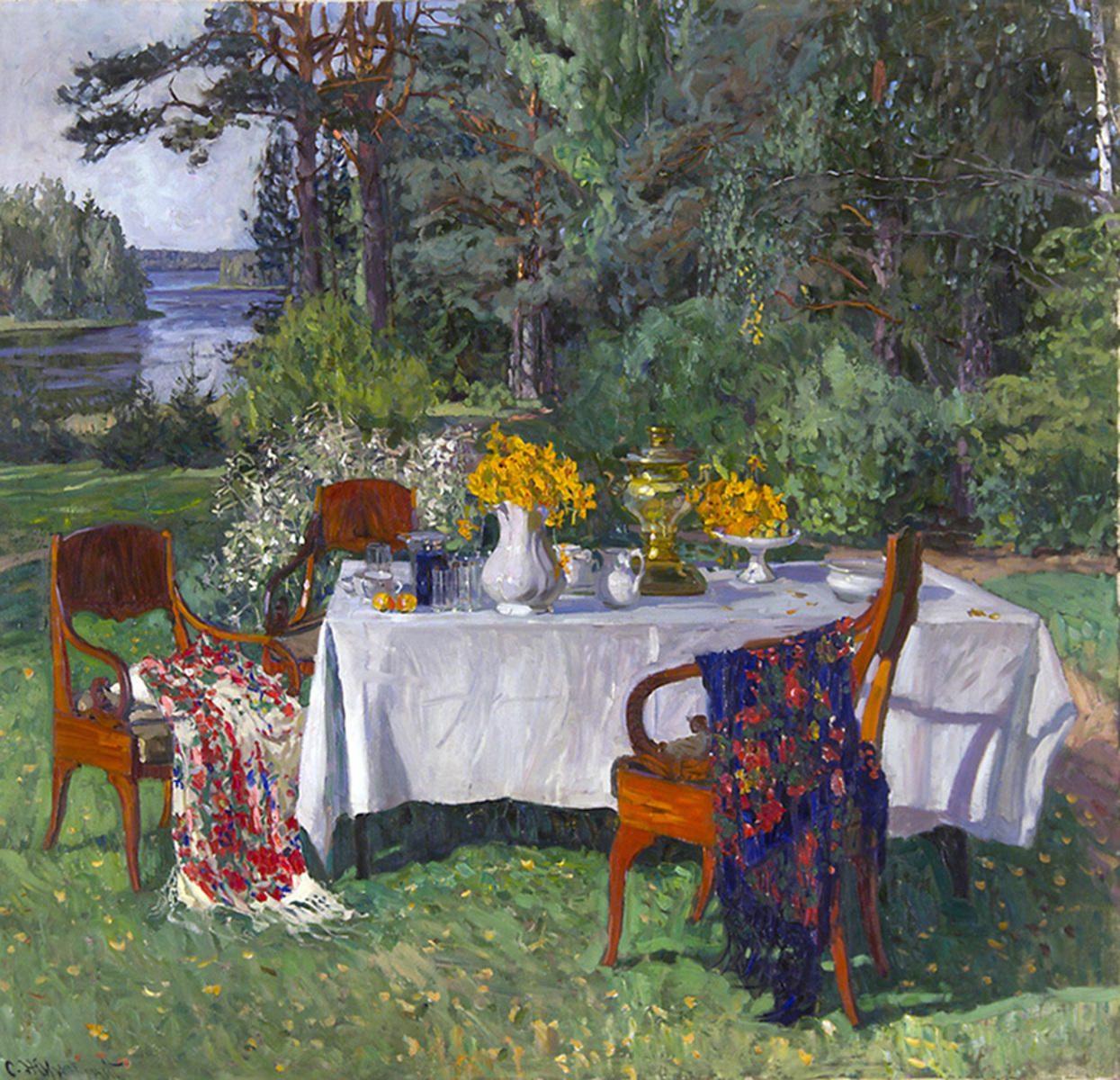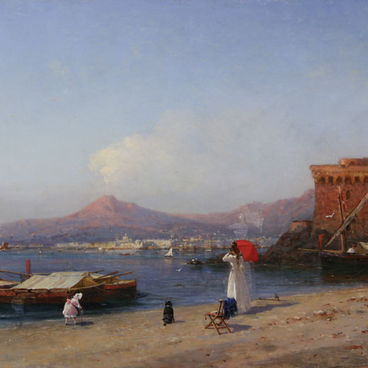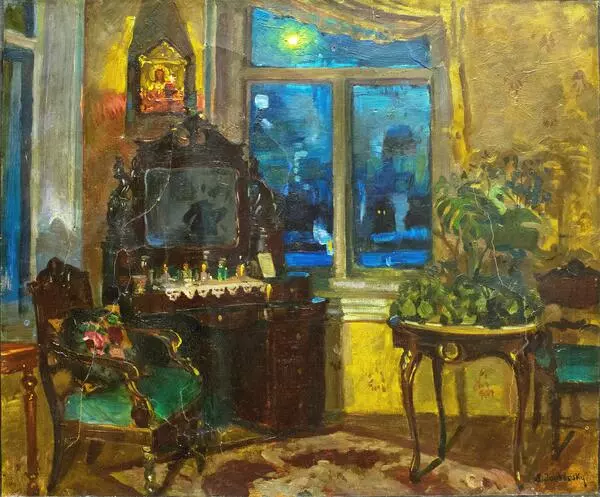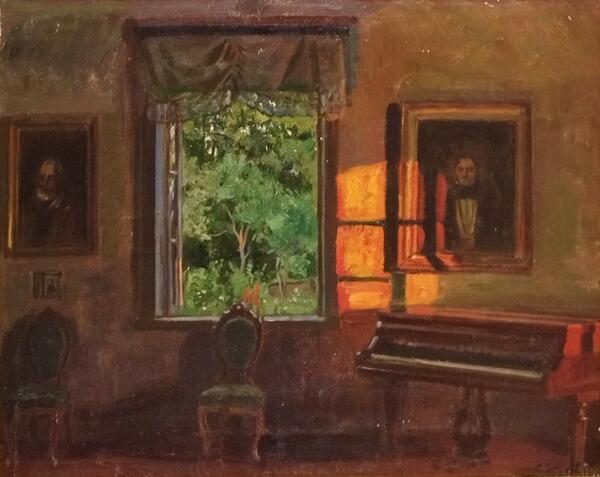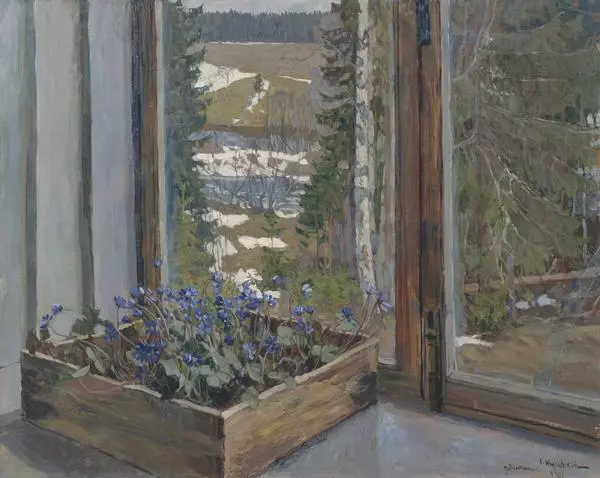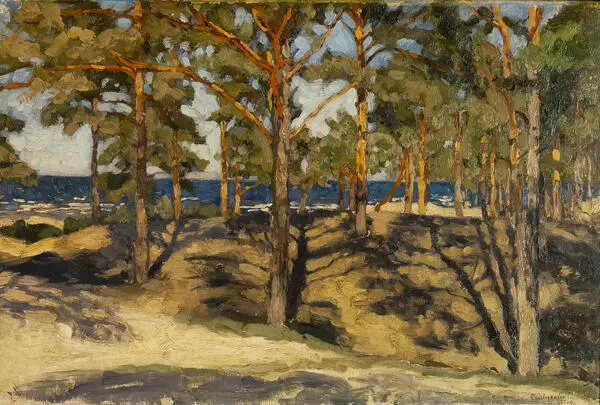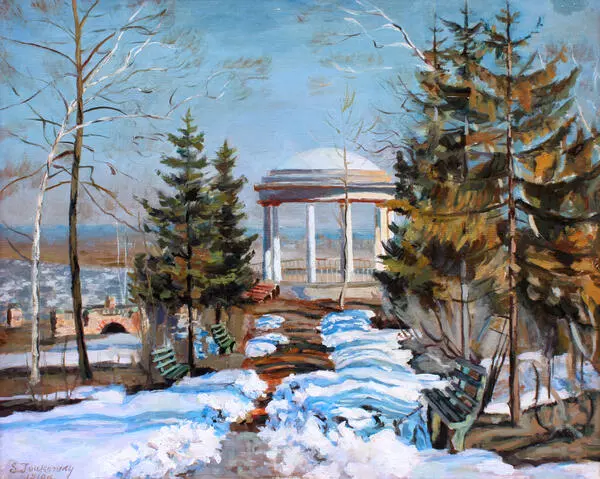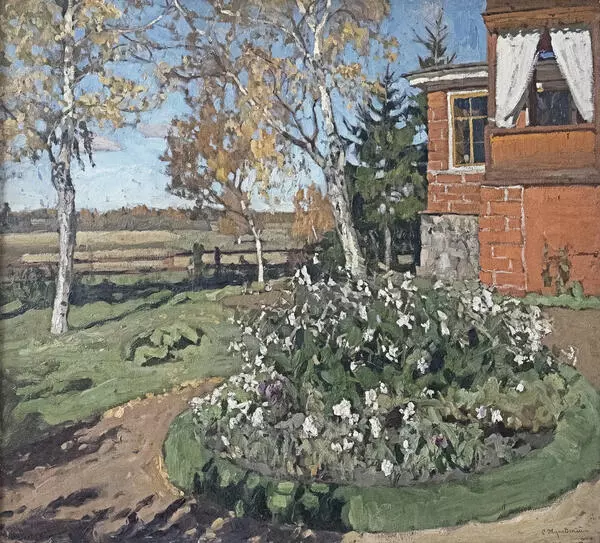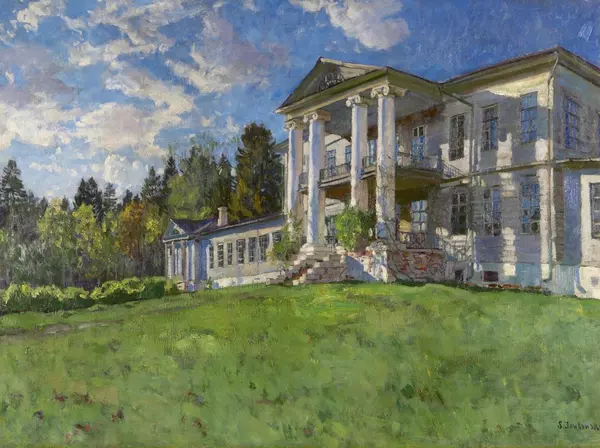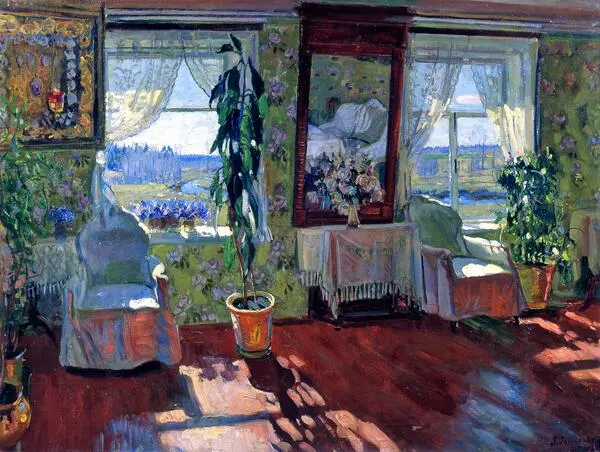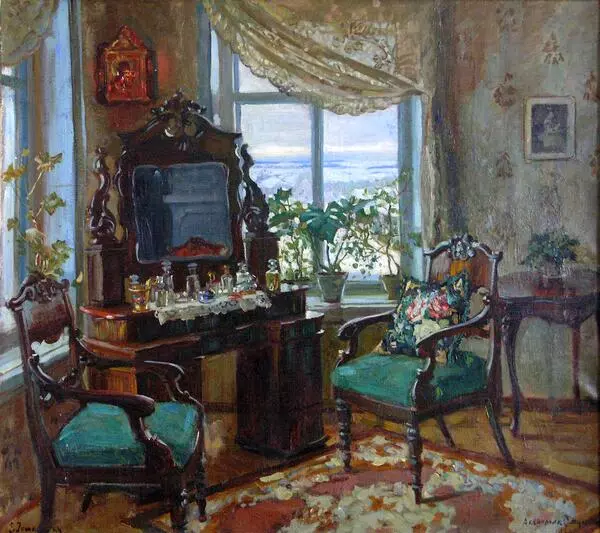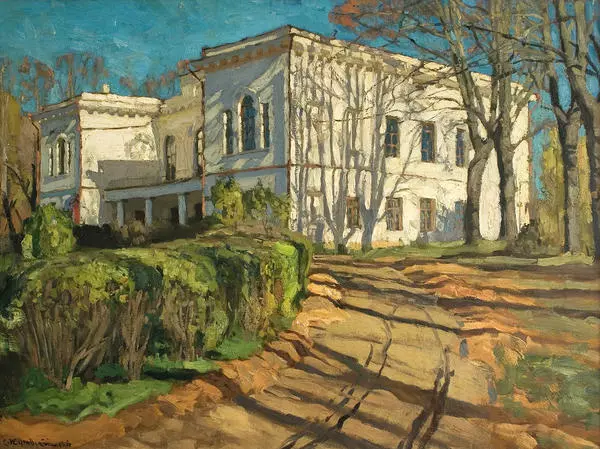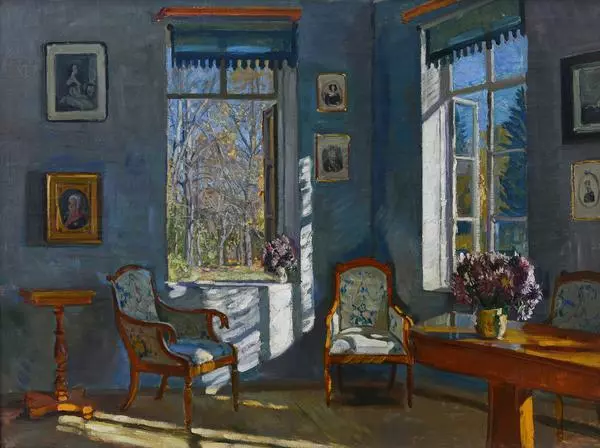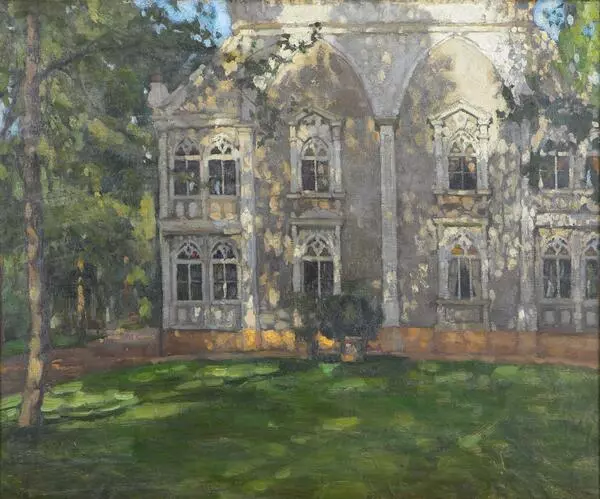Stanislav Zhukovsky is a recognized author of the lyrical landscape, the successor of the traditions of A. Savrasov, V. Polenov and his teacher I. Levitan. His work is distinguished by diversity of topics: traditional landscape, manor landscape and the reconstruction of the interiors. Each independent series is interconnected. Often, elements of different genres coexist in the same work of the artist.
Impressed by the Pushkin era, Zhukovsky focused on the Russian provincial estate. The world of the estate combined the past and the present, the history of the national culture of the ‘Golden Age’ and the noble family traditions. Lyrical images close to the Zhukovsky‘s paintings are reflected in Russian poetry of the 19th - early 20th centuries, including the work of A. Tolstoy, S. Nadson, and I. Bunin. The interest in the Russian estate among the artists was increased due to the gradual disappearance of the noble culture.
Zhukovsky traveled much throughout Russia, studying the ancient manor estates and aiming to capture the charm of the disappearing everyday life. His canvases are full of light, color reflections and shadows. The wide generalized manner of drawing, and the use of black and white contrasts and color combinations give the artist’s works of a decorative character.
Manor Ostrovki in the Tver Province was the artist’s refuge for a decade. Every year from early spring to late autumn Zhukovsky rented a big house there. The artist loved depicting a corner of the park on the shores of Lake Moldino with its picturesque perspective between the big and small islands.
The painting of the Vrubel Museum collection shows a table with a samovar and nasturtium flowers in porcelain vases. Next to it are empire chairs with woolen shawls thrown over them. This composition creates the impression that the owners of the shawls are invisibly present on the canvas, staying behind the frame of the scene. The sunset rays of the sun, playing on the trunks and branches of trees, enhance the feeling of sadness over the disappearing harmony of the manor world.
At exhibitions of the Union of Russian Artists, Zhukovsky’s poetic paintings attracted public and professional attention. This landscape was acquired by the famous Moscow collector Alexander Kasyanov, who then donated his collection to the Rumyantsev Museum. Then, in 1924, the landscape was send to the art department of West Siberian Regional Museum, which later became the Vrubel Museum of Fine Arts.
Impressed by the Pushkin era, Zhukovsky focused on the Russian provincial estate. The world of the estate combined the past and the present, the history of the national culture of the ‘Golden Age’ and the noble family traditions. Lyrical images close to the Zhukovsky‘s paintings are reflected in Russian poetry of the 19th - early 20th centuries, including the work of A. Tolstoy, S. Nadson, and I. Bunin. The interest in the Russian estate among the artists was increased due to the gradual disappearance of the noble culture.
Zhukovsky traveled much throughout Russia, studying the ancient manor estates and aiming to capture the charm of the disappearing everyday life. His canvases are full of light, color reflections and shadows. The wide generalized manner of drawing, and the use of black and white contrasts and color combinations give the artist’s works of a decorative character.
Manor Ostrovki in the Tver Province was the artist’s refuge for a decade. Every year from early spring to late autumn Zhukovsky rented a big house there. The artist loved depicting a corner of the park on the shores of Lake Moldino with its picturesque perspective between the big and small islands.
The painting of the Vrubel Museum collection shows a table with a samovar and nasturtium flowers in porcelain vases. Next to it are empire chairs with woolen shawls thrown over them. This composition creates the impression that the owners of the shawls are invisibly present on the canvas, staying behind the frame of the scene. The sunset rays of the sun, playing on the trunks and branches of trees, enhance the feeling of sadness over the disappearing harmony of the manor world.
At exhibitions of the Union of Russian Artists, Zhukovsky’s poetic paintings attracted public and professional attention. This landscape was acquired by the famous Moscow collector Alexander Kasyanov, who then donated his collection to the Rumyantsev Museum. Then, in 1924, the landscape was send to the art department of West Siberian Regional Museum, which later became the Vrubel Museum of Fine Arts.
